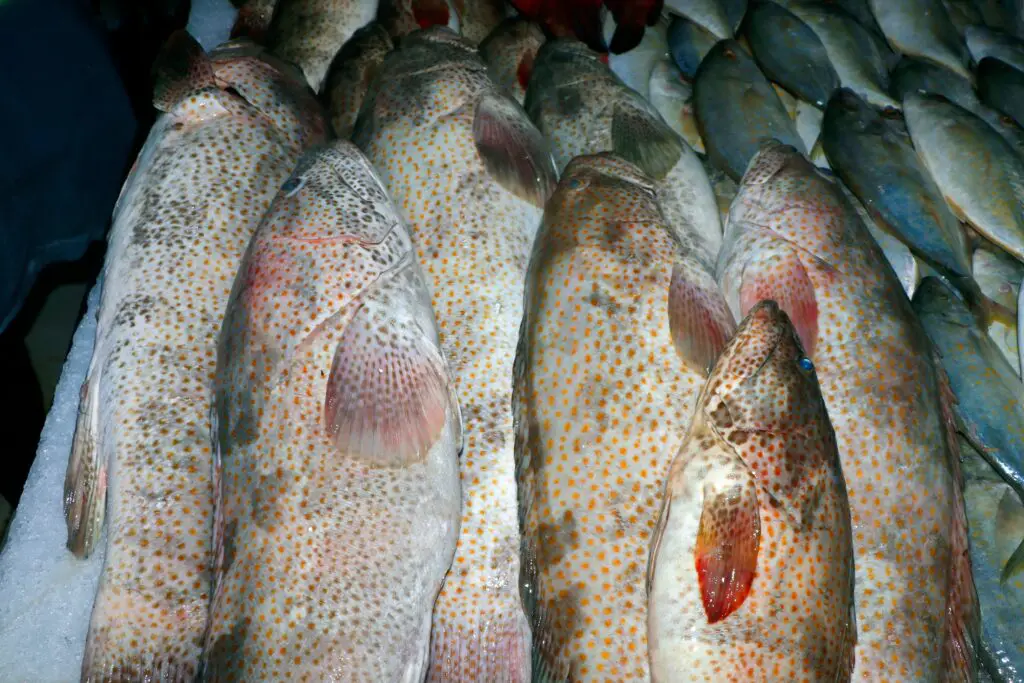Hamour grouper is more commonly known as the brown spotted Grouper, but it is also known as the brown spotted reef cod, brown spotted rock cod, coral grouper, or honeycomb cod. This is a grouper species that is mainly found in the Middle East. The scientific name for this fish is Epinephelus chlorostigma, a species of ray-finned fish that is part of the subfamily Epinephelinae, which is again part of the family Serranidae, which also includes the anthias and sea basses. This is a very interesting grouper species.

The Appearance of Hamour Grouper
The Hamour grouper looks like most groupers, with a standard length. The lower jaw of this fish is slightly jutted outward compared to the upper jaw, like most other groupers. The fish has defined dorsal fins, anal fins, caudal fins, and pelvic fins. Except for the lower part of its head, chest, and lower part of its abdomen, the fish’s entire body is covered in small brown spots. The fish’s entire body is a pale brownish color. There is nothing particularly interesting about the appearance of this fish. It looks very unassuming, which is why it can be hard to distinguish this fish from other grouper species.
The Habitat of Hamour Grouper
This is a widely found grouper fish that is found in the Red Sea and the eastern coast of Africa, as far south as KwaZulu-Natal in South Africa, to the Western Pacific Ocean, north to southern Japan, south to New Caledonia and east to American Samoa and Fiji.
The name “Hamour grouper” comes from the Persian Gulf, where it is abundant as well. It is also known as Souman or Hamour-e Khaldar-e Qahvei in Persia. Although this fish has a wide habitat, there are some places where the presence of this fish is not confirmed; Comoros, the continental shelf between Oman and Cambodia, the East Indies, Taiwan, and mainland Australia, which come in between its natural habitat.
In the ocean, this fish is known to be a bottom-dwelling fish, so it is found deep in the ocean, from 13 feet to 919 feet deep in the water. However, it is rare to find this fish in shallower water, where other bigger fish can eat it. The habitat can include seagrass beds and outer reef slopes mainly. However, they can also be found in muddy bottoms like catfish, but the fish prefers reefs and stays hidden in crevices and coral caves from where it can ambush the prey.
The Size of Hamour Grouper
This is a fish that can get large in size. Due to the size as well as the appearance of the fish, it often gets mistaken for goliath grouper. Goliath grouper is a very different species, and it gets much bigger than Hamour grouper.
The average size of this fish is around 20 inches, but the biggest Hamour Grouper that was recorded was 31 inches in size and weighed 15 pounds. Compared to the goliath grouper, this is a very small size, but it allowed it to grow. The Hamour Grouper can probably grow bigger in size. This fish, like other groupers, lives for a long time. The longest lifespan recorded was 29 years, but it is an estimate, and it can live for longer. Of course, many fish do not live up to their lifespans because they get preyed upon by bigger fish.
The Reproduction of Hamour Grouper
There is not much information on the reproduction of this fish. This is because it is pretty hard to make them reproduce and observe the behavior. However, we do have some ideas about the breeding behavior of the Hamour grouper.
This fish is a protogynous hermaphrodite. In simple terms, means that the fish can change its sex from female to male. The fish is primarily born female. Not all fish change their sex, but the ones that do only do it after reaching maturity. The fish reaches maturity when it is 14 inches to 18 inches in size. After that, the fish take part in spawning aggregation.
The Nutritional Composition of Hamour Grouper
There are few grouper fish that are eaten, but Hamour grouper is one that is enjoyed by people, especially in the Middle East, where it is considered a delicacy. This fish is high in vitamins and Omega-3, so it is a nutritious meal. The protein in the fish is as high as 43 grams per 100 grams of the fish. A 100-gram fillet of grouper fish also has 2 grams of fat and 9 grams of carbohydrates but no sugar or fiber. The total calories in the fish are 201, which is low for the amount of protein that you get. Considering the nutritional value of the fish, it is eaten as a diet food as well. Fish is also high in vitamin A and vitamin C. It is an excellent source of calcium as well as iron. A 100-gram fillet is made up of 13% iron, which is a very high amount.
The Taste of Hamour Grouper
Since it is a popular fish, it tastes great as well. It does well with a lot of different spices and flavors, but the natural flavor of the fish is great too. This is a light and sweet fish that has large flakes that make it taste almost like crab or lobster. Considering it has a very light taste, the fish can absorb marinades very well. However, preparing it simply by grilling it or pan-searing it with butter and a squeeze of lemon is also a very popular way to enjoy it.
Conclusion
The Hamour grouper is a popular fish in the Middle East, and for a good reason. It is a very tasty fish that can take on a lot of flavors. Even without that, this is an interesting fish that can change its sex and camouflage within its surroundings.











Pingback: Differences Between Grouper vs. Perch | Reel Fishing Guru